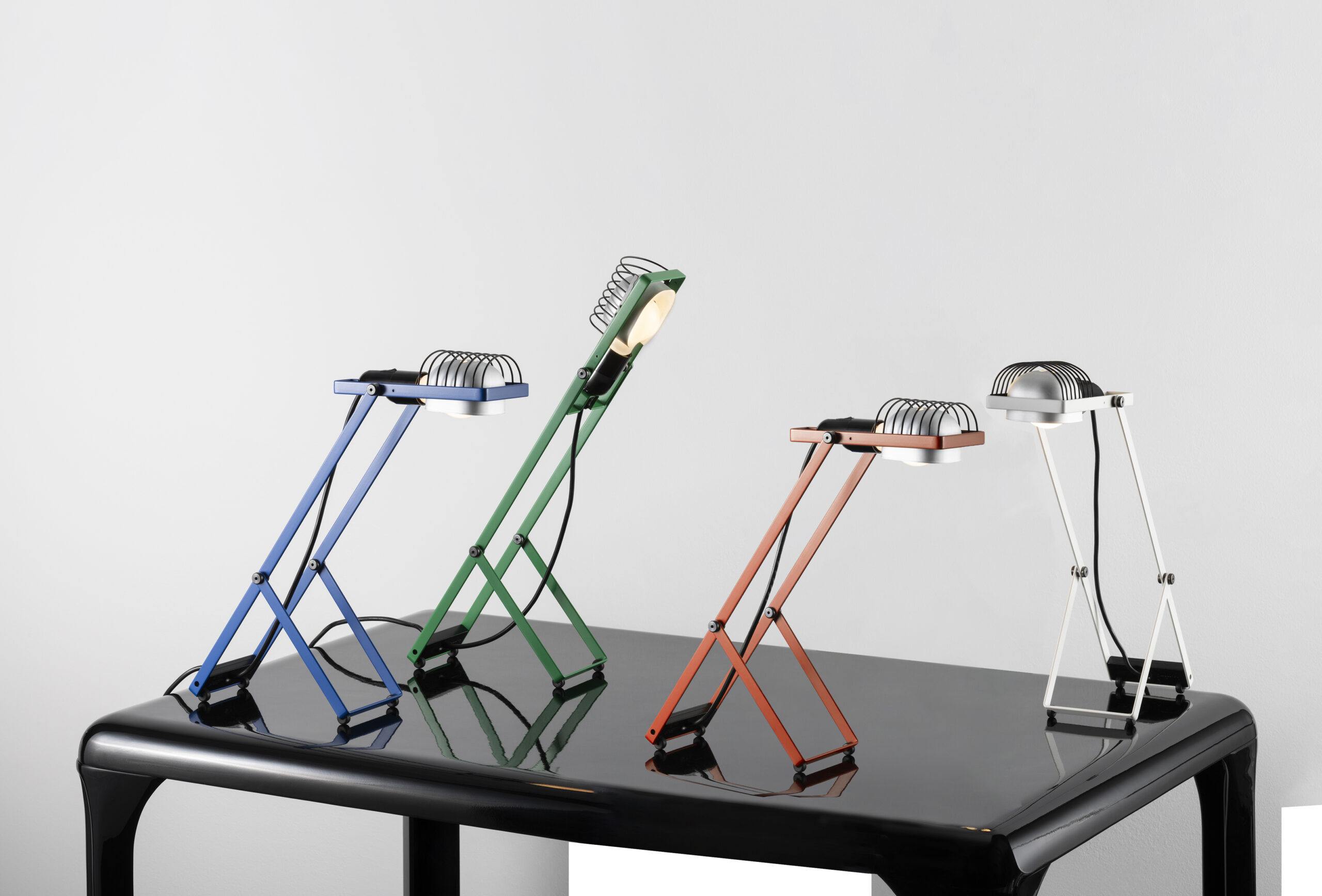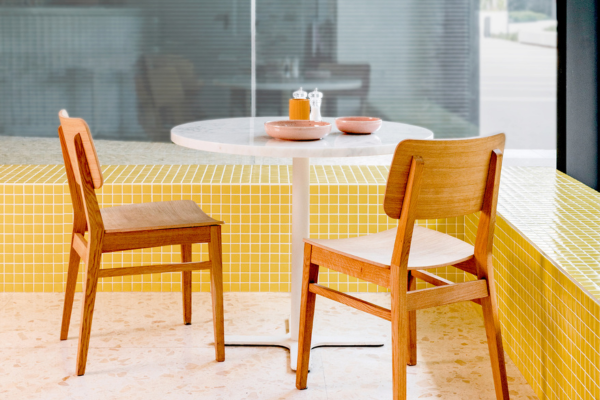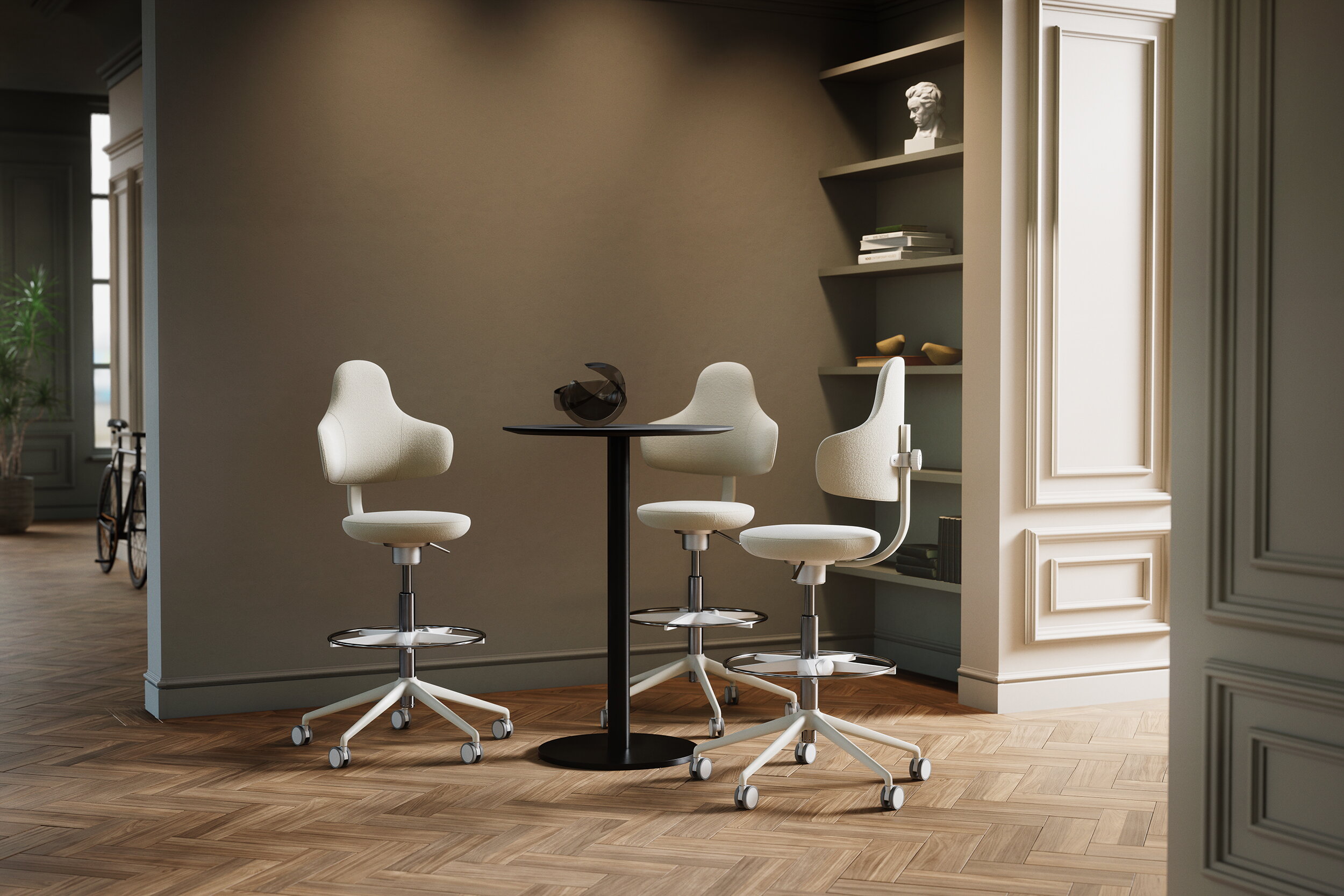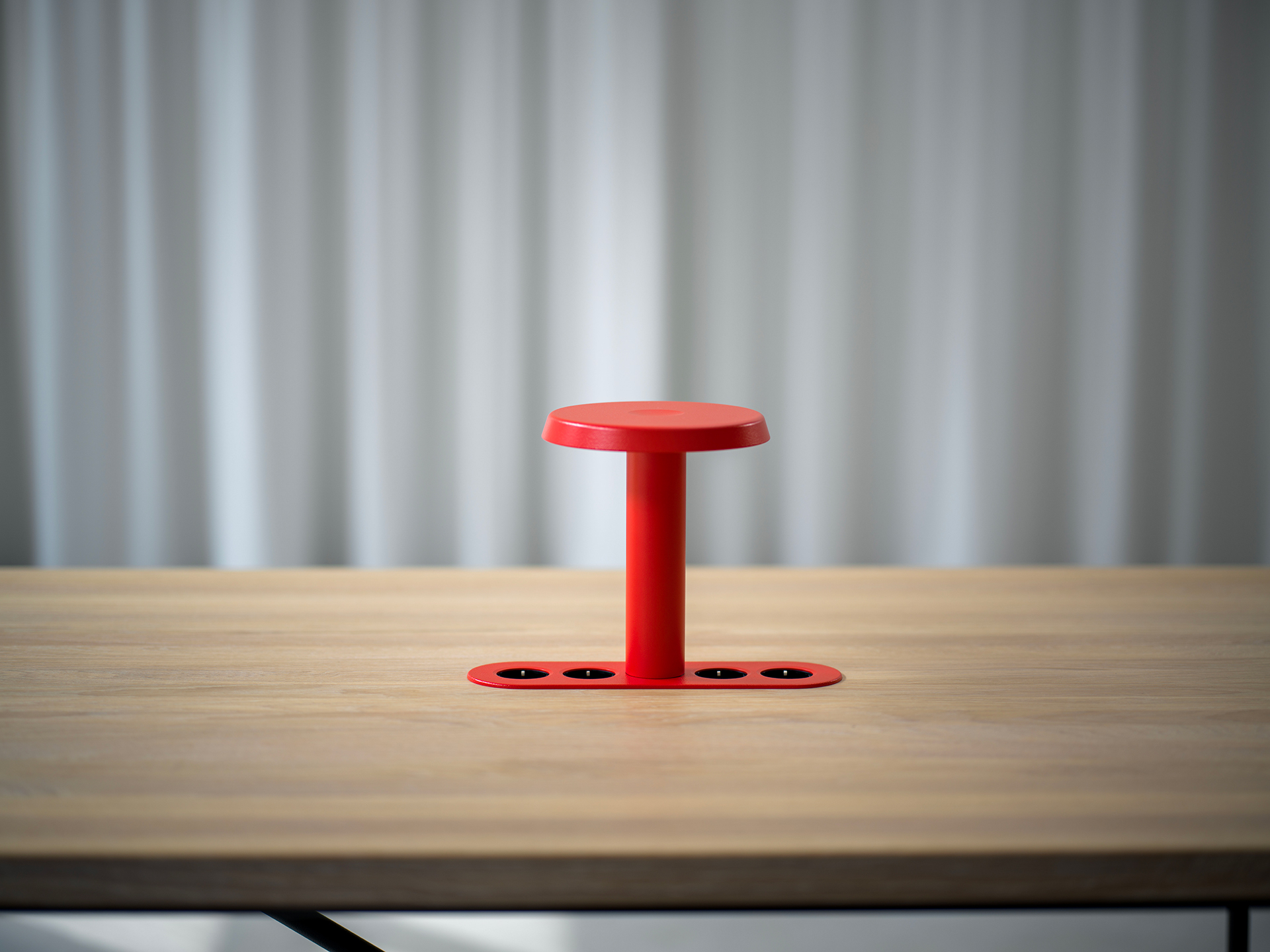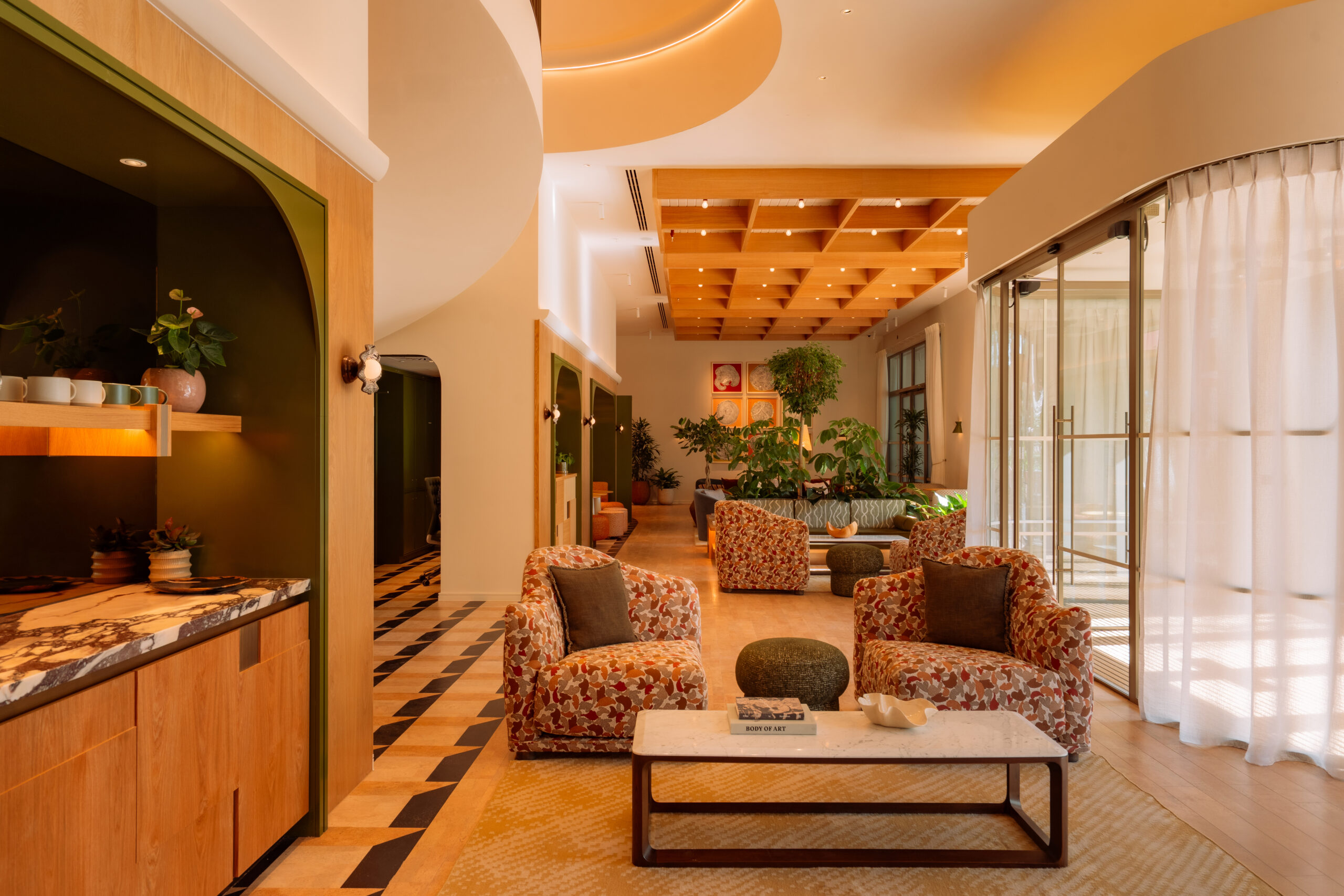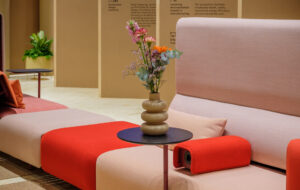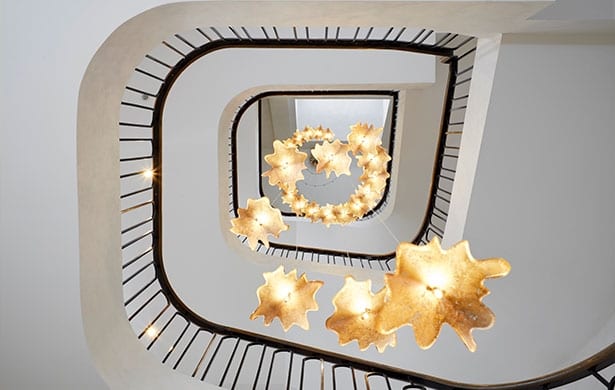 |||
|||
 Nulty Bespoke designs a cascading chandelier for Lonsdale Road
Nulty Bespoke designs a cascading chandelier for Lonsdale Road
OnOffice: Tell us about the Nulty Bespoke brand – what’s the ethos and how does this correlate with your recent work?
Paul Nulty: Nulty Bespoke comes from a lighting consultancy background. We started off working on a wide-range of projects, and what we found was that most required custom lighting. We were designing the light fittings and they were being sent to other manufacturers where they were returning late and were expensive, so we were just left sorting out these problems. In the end we got a little bit tired dealing with that, and thought, why don’t we just bring it in-house? That’s when we set up Nulty Bespoke [21] months ago. The idea was that we could then control the quality and what’s being produced – it works very well and especially from a commercial side of things.
We’ve also just picked up a big office project: a nine-week project from start to finish, it’s going to be beautiful. There’s a lot of bespoke work on it and, because we have control of the start-to-finish, we can deliver. Ultimately I’ve now got more confidence in the quality of what’s being produced.
 Nulty Bespoke designs the lights for London restaurant Mere
Nulty Bespoke designs the lights for London restaurant Mere
Where do you see your designs being used, is there usually a specific end-point or sector in mind?
Every design should be a reaction to a particular project, or so it should be. If you came to me enquiring about the west wing of your house, where you have a ballroom, then we would ask you what you’re interests are, where you met your husband and whether you spent six months writing love letters to each other – which actually happened on a project. The clients were writing love letters backwards and forwards to each other for a long time, and so we immortalised those letters as inspiration. There’s a whole chandelier of love notes – it’s really sweet. In this sense, everything is a reaction; when someone says let’s design a kitchen, it’s more about how they react to the use of that kitchen and about choosing the right product for the right reasons.
 Various projects were showcased at this year’s Clerkenwell Design Week
Various projects were showcased at this year’s Clerkenwell Design Week
Have you noticed any major trends in lighting design?
Everything is custom and there’s a lot of copper. Trends are currently steering towards lower levels of light, with slightly more personalisation. There’s also definitely a move from visible light sourcing to concealed lights, which is all about the shaped light rather than looking directly at the source – we did the lighting for Google’s offices, where there’s a big staircase with concealed luminaires. It’s about looking at the effect of light, and to make sure that people understand that the quality of lighting a space is important, as is the quality of the light fitting.

Sustainability is a main driver at the moment in all areas of design – how do you incorporate this within lighting?
You have to have a lot of thought. From a lighting design perspective, sustainability is incredibly important; everything is now more efficient because of new technologies, such as LED. Although, the LED drama has been banging on for so long now, I’m bored of it, but that’s where it’s going. An LED chip is designed so long as you understand how to thermally manage it, and then you can integrate it into anything. You can take a bean can and turn it into a light fitting if you wanted to – which is great, but you’ve just got to be able to understand how to manage that technology properly. If you can do it right, then it’s amazing, but the disadvantages of that is you get a lot of companies popping up and disappearing again.
There are a lot of people that only have a limited amount of knowledge and it’s very easy to hoodwink them – I think you need good knowledgeable people to either come in and develop the product with you, or develop the scheme. You can’t just choose the product; to me that’s like walking into Prada or Louis Vuitton and choosing loads of clothes and just sticking them on, which doesn’t make me look chic or lovely – you can you look chic or lovely in clothes from H&M or Primark. It’s about how you style the clothing, not about what it is. In this sense, the most important thing is that lighting design is about how you apply the light, not just about choosing nice light fittings.
How does lighting influence wellbeing?
The big term that everyone’s using is ‘humancentric’ lighting – i.e. the psychology of light. Not only can you wake people up through using blue light, with the effect it has on our circadian rhythms, but you can make people feel cosier or more romantic. Again, in the west wing of your house, if you wanted your partner to feel cosy or romantic you would dim the lights. The point is that it’s a lot of stuff we’ve been doing for years, but people have only just started to notice it, to market it and package it up.

Paul Nulty, founder of bespoke lighting design practice, Nulty Bespoke, discusses his brand ethos and let’s us in on the current trends shaping the industry


